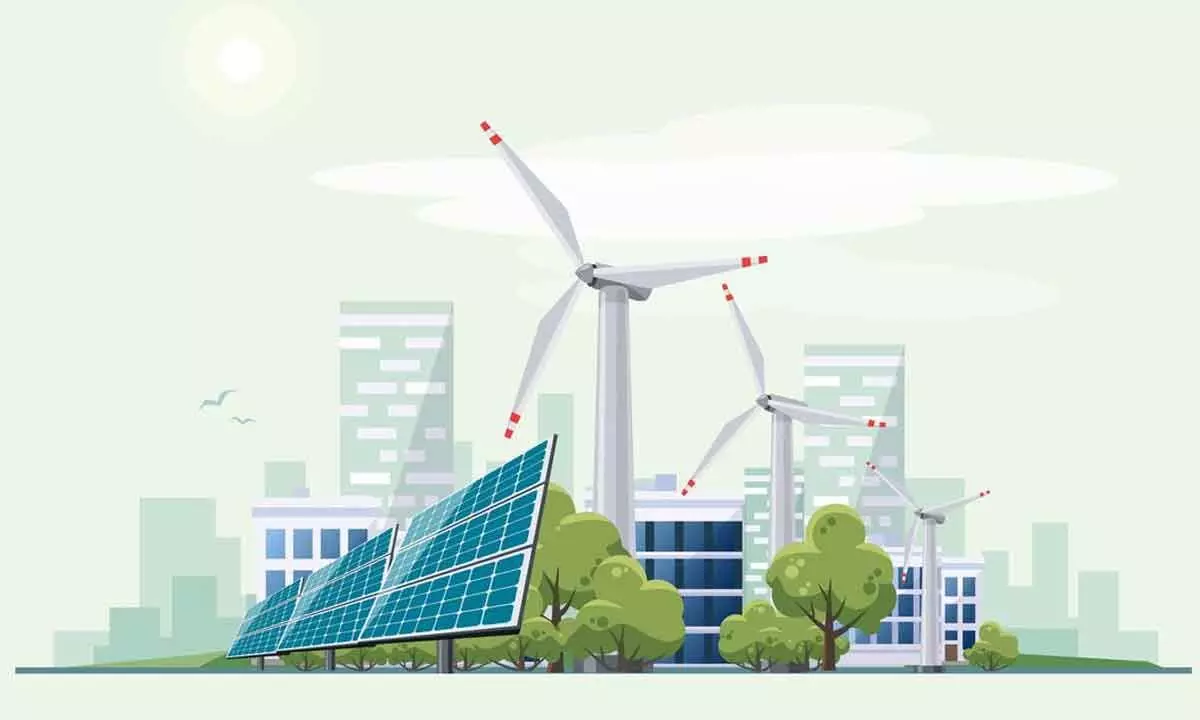Greater thrust needed for green energy transition

The recently concluded Group of 20 Nations (G20) Summit has appreciably focussed on the transition towards green energy. Apart from focussing on trade irritants, with the world’s most advanced nations in toe, the G20 group has resolved to triple the global renewable energy capacity by 2030. In view of the rapidly rising CO2 emissions, not waiting for the developed nations to cut down their emissions, India has joined a band of nations aggressively pushing for the green transition. With the Globe warming up like never before, unless there is a concerted push towards a green and sustainable energy transition, systemic shocks in form of extreme events such as desertification, floods, and wildfires will be the norm; and, hence, a greater need for global action to bring down energy prices which are touching sky-high, threatening to wreak households and economies alike.
The global energy crisis has made it imperative to accelerate energy transition away from fossil fuels towards renewable sources. Last year, the globe added a record 300 gigawatts of renewables. The International Renewable Energy Agency said that green energy now makes up 40% of the total installed capacity worldwide. Despite that progress, the agency said the energy transition is off track: renewables must hit 1,000 gigawatts annually to keep 1.5 degrees Celsius alive. The UN Secretary-General Antonio Guterres warns the climate breakdown is “spinning out of control.” The collective response is lacking in ambition, credibility, and urgency.
What does the green energy push mean for India? It benefits India immensely, by advancing its economic development, improving energy security, hastening access to energy, and mitigating climate change. With the second largest population in the world, India’s per capita CO2 emissions are at 1.8 tonnes per capita, much lower than the global average (the US accounts for 14.7 tonnes, China 7.6 tonnes). At COP-21 in Paris in 2015, India committed to a 40% share of power generation from non-fossil fuel sources. We achieved this target a decade ahead of the 2030 timeline. Now, the country is raring to achieve Net Zero Emissions by 2070, in addition to attaining the short-term targets which include: Increasing renewables capacity to 500 GW by 2030; Meeting 50% of energy requirements from renewables; Reducing cumulative emissions by one billion tonnes by 2030, and Reducing emissions intensity of India’s GDP by 45% by 2030.
Developing countries, more so the Global South, has much to reap from India’s stellar success in this regard so far. India now relies on coal to fuel 55% of its energy mix. It plans to secure 450 gigawatts of wind, solar, and hydro by 2030 and to hit net zero by 2070. It needs an estimated $160 billion annually to do this. What is needed is only adequate financing as India is philosophically inclined to the green energy transition. Now, the country not only needs to spur technological innovations to cut the costs for more efficient solar, hydel, and wind installations, but also prod the developed countries for technology transfer so the pace of contribution of renewables to the energy mix can be sped up. According to the International Energy Agency, coal use jumped by 3.3% last year to 8.3 billion metric tonnes - a new record. The fuel comprises 36% of global electricity markets. To phase down coal use, climate finance remains a critical obstacle.














